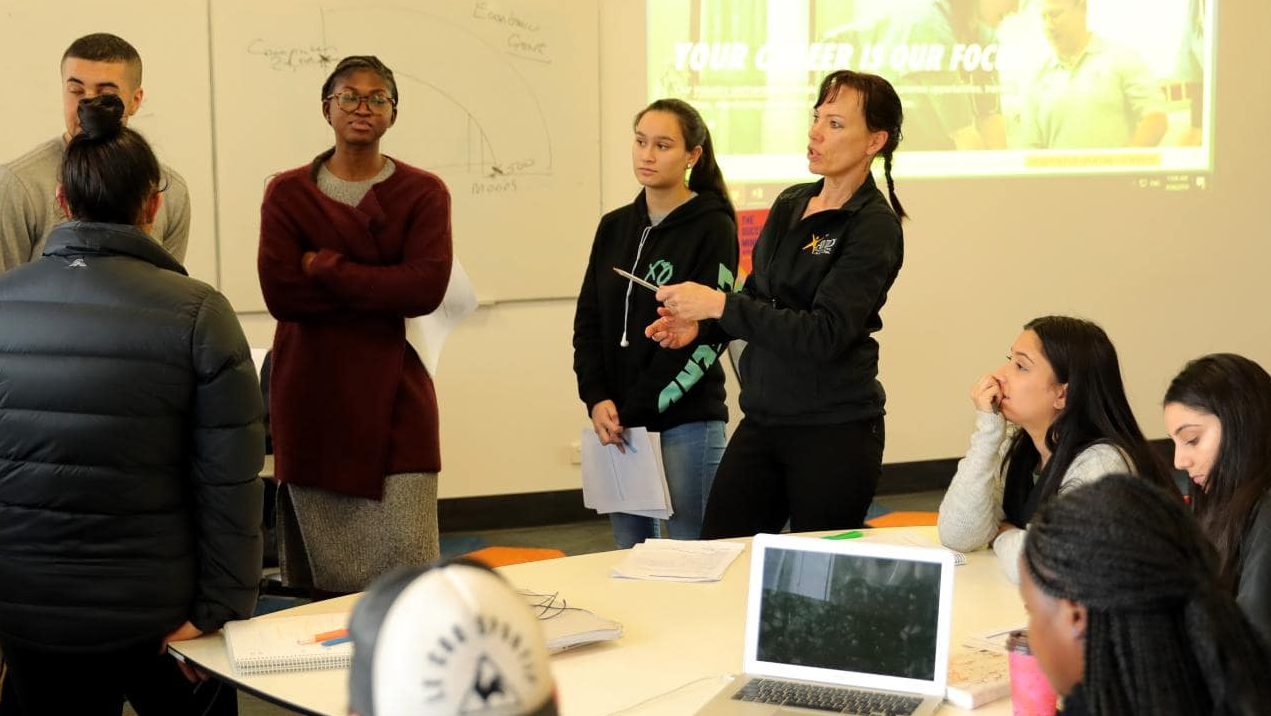VU’s new block teaching model has received significant attention in the press over recent weeks (see links below). AVID Australia National Director, Claire Brown, who has been leading the professional learning activities for the staff implementing this new model, sat down with us to share her view on how AVID is informing teaching at VU. We particularly asked her about her recent experience as the pedagogical coach for the Vice Chancellor.
What surprised you about working with the Vice-Chancellor in an economics unit?
I was surprised how much I enjoyed learning about economics. Apart from doing a unit at university many years ago, I really did not remember a whole lot about the subject. I thought my role would be to just act as the pedagogical coach but found myself really engaging in the content.
The last time I was in an economics classroom, it was taught straight out of a textbook and very little effort was made to make it applicable to experiences in my life at the time. I think we definitely tried to make this unit more engaging.
I really enjoyed working with Peter (Peter Dawkins, VC at Victoria University) and Jesse Singh who wrote the unit. I think Peter did a great job with his students. In addition to his already busy schedule, he invested countless hours to make the unit as engaging as possible. I don’t think he had a relaxing Sunday for quite a few weeks. He really engaged with the students and cared about their individual progress. It was a rewarding experience to work with someone who was really committed to students and their needs.
How did you work with Peter to make the unit more engaging?
We set out to make various economic concepts relatable to the students’ and framing activities and exercises in a context using language that made sense to them.
Students were expected to watch instructional videos and do selected readings outside of class hours. When they were in class, the focus was on facilitating students’ understanding of key concepts and checking they understood the concept before progressing to a new one.
We used strategies like 10-2-2 where every 10 minutes or so of teacher-talk is followed by two minutes of personal reflection before a quick group discussion. We also used philosophical chairs to debate different issues and a simulation game.
Tell us more about the simulation game, how did that work?
We used a simulation game to explain supply and demand in the market. Students had to negotiate prices for various quantities of a commodity. They quickly learned how to play the market and became more and more sophisticated in the way they engaged in the transactions.
You said you wanted to make concepts more tangible for students, can you give us a few examples?
So, for instance, in a lesson about opportunity cost, we posed the following scenario to students:
- If someone rang you and offered you an all-expenses-paid trip to Sydney, leaving next Tuesday, would you go?
At first, the students thought they would definitely take the ticket! As they thought through the benefits and costs of this offer, many realised they had commitments they could not move and would, therefore, not be able to go.
Another example is when we talked about macroeconomics and employment. Peter had organised for Tim Dodd (Education Editor, The Australian) to join us for this class. He had given us access to one of his articles about the impact of artificial intelligence on the job market.
We used a flipped learning model and asked students to consider the arguments made in the article before class. We set up a philosophical chairs activity to debate in class about whether they were optimistic or pessimistic about their future career options. That really resonated with our students! Many of the students have already experienced exploitation in the job market and they provided some thoughtful perspectives. Peter then collated the arguments and worked with a small group to write a response to Tim Dodd’s article, which was subsequently published in the Australian, so our students have their first group publication! It was a great teaching and learning experience for all of us.
What were your takeaways from this experience?
We know that the traditional model of teaching with the lecture and tutorial format is outdated. It’s just too impersonal for today’s students. My experience in this unit and across First Year College has reaffirmed my belief that students are interested in learning and do want to engage with the subject, other students and the facilitator. It’s up to us to equip ourselves with a repertoire of engaging teaching strategies so that our students can access the learning skills to make the classroom experience engaging. AVID offers a wide repertoire of high engagement teaching strategies that build teacher confidence and mastery for the art and craft of teaching.
Links to the news articles in The Australian:


